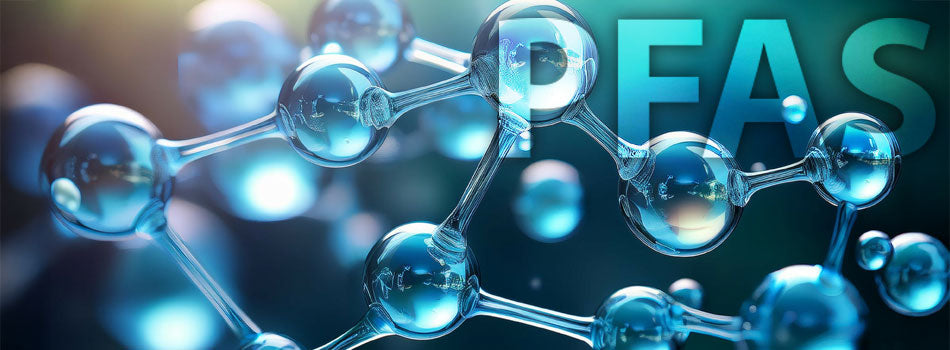Refrigerants, Regulations and Efficiency: How the HVAC/R Industry is Changing

Growing concerns about environmental issues such as the greenhouse effect and pollution caused by per- and polyfluoroalkyl substances (PFAS) are prompting governments to introduce stricter regulations to control emissions. Significant action is expected in the coming years, with a direct impact on refrigerants, especially fluorinated refrigerants, which are known to be major contributors to global warming. Many countries are planning measures to progressively reduce and control the use of these high global warming potential (GWP) refrigerants.
As a result, key regulations such as the F-Gas regulation in the European Union and the AIM Act in the United States continue to evolve, while new concerns, such as the impact of PFAS, are increasingly coming to the fore due to their potential harmful effects on the environment and human health. Restrictions on the use of these substances – some already included in the new F-Gas regulation – could have a significant impact on the refrigeration, air conditioning and heat pump (RACHP) sector.
Alternatives to HFCs with an ODP (Ozone Depletion Potential) of 0 and the lowest possible GWP have been sought for some time. However, most alternative refrigerants are slightly or highly flammable, requiring strict risk management.
Initially, preventive measures included keeping the concentration of flammable refrigerants below the lower flammability limit (LFL) and isolating them from potential ignition sources through strategic positioning or isolated systems.
However, these solutions are not always feasible, and in the industrial sector the challenge is even more complex. For this reason, other effective solutions have been developed, such as components that, according to product safety standards, are not considered potential sources of ignition due to electric arcs or critically high temperatures when using A2L or A3 refrigerants.
The use of these components not only improves operational safety, but also simplifies the certification process for manufacturers, facilitating the transition to more sustainable solutions with a lower environmental impact.
Ecological transition and energy efficiency
The goal of combating climate change by reducing greenhouse gas emissions, which are responsible for global warming, is directly related to the topics discussed so far and to the concept of energy efficiency. Energy savings can be achieved both by modifying processes to reduce waste and by adopting technologies that transform energy more efficiently.
Energy savings opportunities are usually identified through an energy assessment, which analyses energy consumption and determines the most effective actions to improve the efficiency of systems. This is one of the main tools for meeting the objectives set by the various regulations regarding CO₂ equivalent emissions into the atmosphere.
In other words, increasing energy efficiency means using less energy to achieve the same result, thus helping to reduce environmental impact.
In the HVAC/R sector, the use of advanced technologies such as electronic valves, brushless DC compressors with inverter and EC fans can bring significant benefits in this regard.
Electronic expansion valves are essential to ensure precise control of refrigerant flow at all times. They allow the system to operate under optimal conditions during normal operation and reduce energy inefficiencies during the start-up phase compared to systems using ON/OFF control. The start-up phase is often underestimated but has a significant impact on overall energy consumption.
Furthermore, the improved management of small pressure variations allows electronic expansion valves to adapt quickly to changes in system conditions, maintaining a constant flow of refrigerant. Another advantage of these valves is that, in the event of a system shutdown or breakdown, they guarantee a virtually hermetic seal, unlike thermostatic or solenoid valves.
When it comes to compressors, BLDC technology has evolved significantly in recent years in terms of energy efficiency and will be a key solution in the future. The use of inverters in variable speed compressors allows the compressor speed to be modulated based on the actual load, optimizing and reducing energy consumption, especially during periods of low demand. This improves the COP (coefficient of performance) and increases seasonal efficiency (seasonal performance factor).
Finally, it is worth highlighting EC or permanent magnet fans. Thanks to their advanced design, EC motors can achieve an efficiency of up to 92%, compared to 70-80% for conventional AC motors. This is possible due to the use of permanent magnet rotors, which minimize energy losses in copper and slippage, converting a greater percentage of electrical energy into useful mechanical energy.

Advanced systems management
Regardless of the technology used, one thing is certain: the increasing complexity of HVAC units requires the development of innovative solutions for both management and fault detection.
One of the most effective responses comes from mobile applications, which are revolutionizing the way operators interact with equipment. These applications offer a powerful solution to the demands of a constantly evolving market.
By enabling direct connection to units via Bluetooth, mobile apps allow operators to monitor performance in real time, receive notifications about anomalies and alarms, and access data logs for detailed analysis. All of this significantly reduces downtime and improves operational efficiency.
A crucial aspect is the user interface. To be truly effective, these applications must be designed with usability in mind. An intuitive and easy-to-use interface allows operators to quickly navigate between functions, easily identify issues, and follow step-by-step troubleshooting procedures.

In short, the adoption of increasingly efficient and sustainable technologies, driven by the latest regulations, is essential to reduce the environmental impact of HVAC/R systems.
The technical solutions available for compact units offer real opportunities to improve energy efficiency and drive the transition to a more sustainable future.
No comments













0 comentários